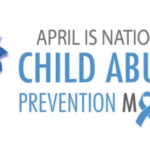by Jessica C. Pirro, LMSW
When someone dies by suicide, the first question often asked is “Why?” “Why didn’t we know they were struggling? Why didn’t they tell someone?” When tragic situations occur, we want to understand why. There are times we can make a cause-and-effect connection to help us understand, but there are many times we cannot. As a community, we need to learn from the stories of those who have died, and strive to reduce further suicides.
During Suicide Prevention Awareness Month, we want to share what we have learned, and describe our community efforts to reduce risk, increase access to help, and save lives. As President and CEO of Crisis Services, Erie County’s 24-hour crisis center, I see the daily struggles people face that may lead them to contemplate suicide. Our 24-hour hotline counselors provide critical support, intervention, and connection to services. Our mobile outreach team provides crisis response visits daily to ensure that people in the midst of a mental health crisis remain safe from themselves and prevent them from hurting others.
With each experience, we learn how to enhance our prevention strategies. We’ve learned that community education, reducing the stigma of mental illness, and helping people connect to services helps someone contemplating suicide. Crisis Services is the agency lead for the Suicide Prevention Coalition (Coalition), a multidisciplinary stakeholder group that provides awareness and training to create a community that is competent to address suicide. And it’s working.
While suicide deaths are rising nationally, Erie County’s suicide deaths have decreased over the past few years. Even with the increased mental health impacts of COVID-19 and the challenges of staying connected, the Coalition has kept services running. We have accomplished this through both virtual training options, and ensuring that conversations surrounding mental health and suicide remain at the forefront.
We need to prevent stigma and stereotypes that continue to isolate people into thinking that suicide is their only answer. You can contribute to the conversation by taking the pledge to end stigma at www.letstalkstigma.org. The first step is connecting with someone who can help. With one call to Crisis Services’ 24-hour hotline at 716-834-3131, you are immediately connected with a trained professional to help guide the next steps in your journey. Crisis Services is also the network center for the newly branded national 988 Suicide and Crisis Lifeline. You can call or text 988 for immediate help and support throughout the United States.
It is natural wonder “why” when something bad occurs. We cannot always answer the “why,” but we can focus on “how.” How can we help more? How can we educate more? How can keep moving forward to a suicide-safer community? As we recognize Suicide Prevention Month, help be part of the “how” by letting others know they are not alone, and that there is help and hope.
For more information on our services and prevention efforts, visit www.crisisservices.org, or www.suicidepreventionecny.org.
Jessica C. Pirro, LMSW is the President/Chief Executive Officer of Crisis Services.












